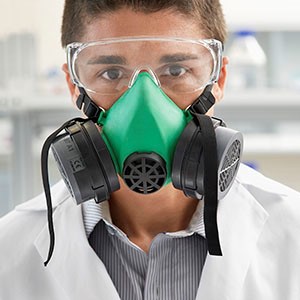Respiratory Protection Standard

Photo by Getty Images
- Is designed to protect the health of employees from harmful dusts, fogs, fumes, mists, gases, smokes, sprays, or vapors. It applies to all occupational exposures to contaminated air when airborne concentrations exceed an action level or as a standard precaution (e.g., protection against infectious agents).
- Requires respiratory protection when effective engineering controls (e.g., enclosure or confinement of the operation, local exhaust ventilation) are not feasible or not fully effective.
- Requires employers to provide appropriate respirators (suitable for the intended purpose) properly fitted to employees when necessary to protect the health of employees until the workplace implements other more effective controls.
- Requires workplaces using respirators to establish a Respiratory Protection Program.
An effective respiratory protection program must cover the following factors:
- Written worksite-specific procedures
- Program evaluation
- Selection of an appropriate NIOSH-approved respirator
- Training
- Fit testing
- Inspection, cleaning, maintenance, and storage of respirators
- Medical evaluation and determination of employee’s ability to wear a respirator
- Work area surveillance
- Air quality standards
The OSHA Hospital Respiratory Protection Program Toolkit also provides recommendations and descriptions of mandatory safety and health standards.
